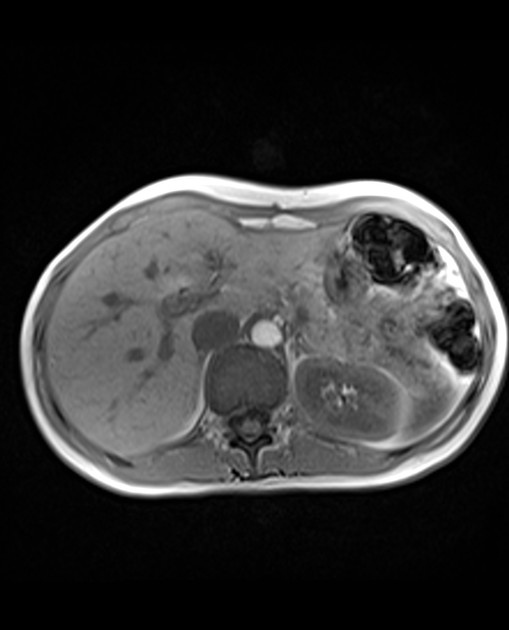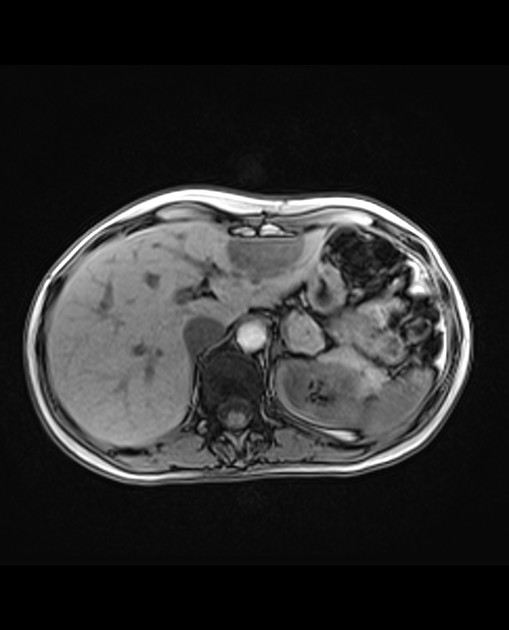The chemical shift is the local change in resonant frequency due to different chemical environments. The external magnetic field causes the electron cloud surrounding the nucleus to induce an electron current, which in turn produces a local magnetic field at the nucleus opposed in direction to the main field. The vector sum of the two fields defines the Larmor frequency of the nucleus (proton) being excited. Since the electron cloud is dictated by the nature of the chemical bonding of the atomic environment the nucleus is in, it will be different for protons in free water as compared to protons in fat or bone marrow. This is considered a chemical shift.
Chemical shift is defined as the fractional shift in Larmor frequency in parts per million (ppm). This value increases with increasing magnetic field strength. This can sometimes cause artifactual voids in MR imaging. It is used constructively in NMR spectroscopy (MRS) to obtain information about chemical binding.
Loss of signal between in-phase and out-of-phase images indicates an intravoxel lipid, which is used to differentiate benign and malignant processes in the chest and abdomen, and determine tissue composition of abdominal organs 2.






 Unable to process the form. Check for errors and try again.
Unable to process the form. Check for errors and try again.